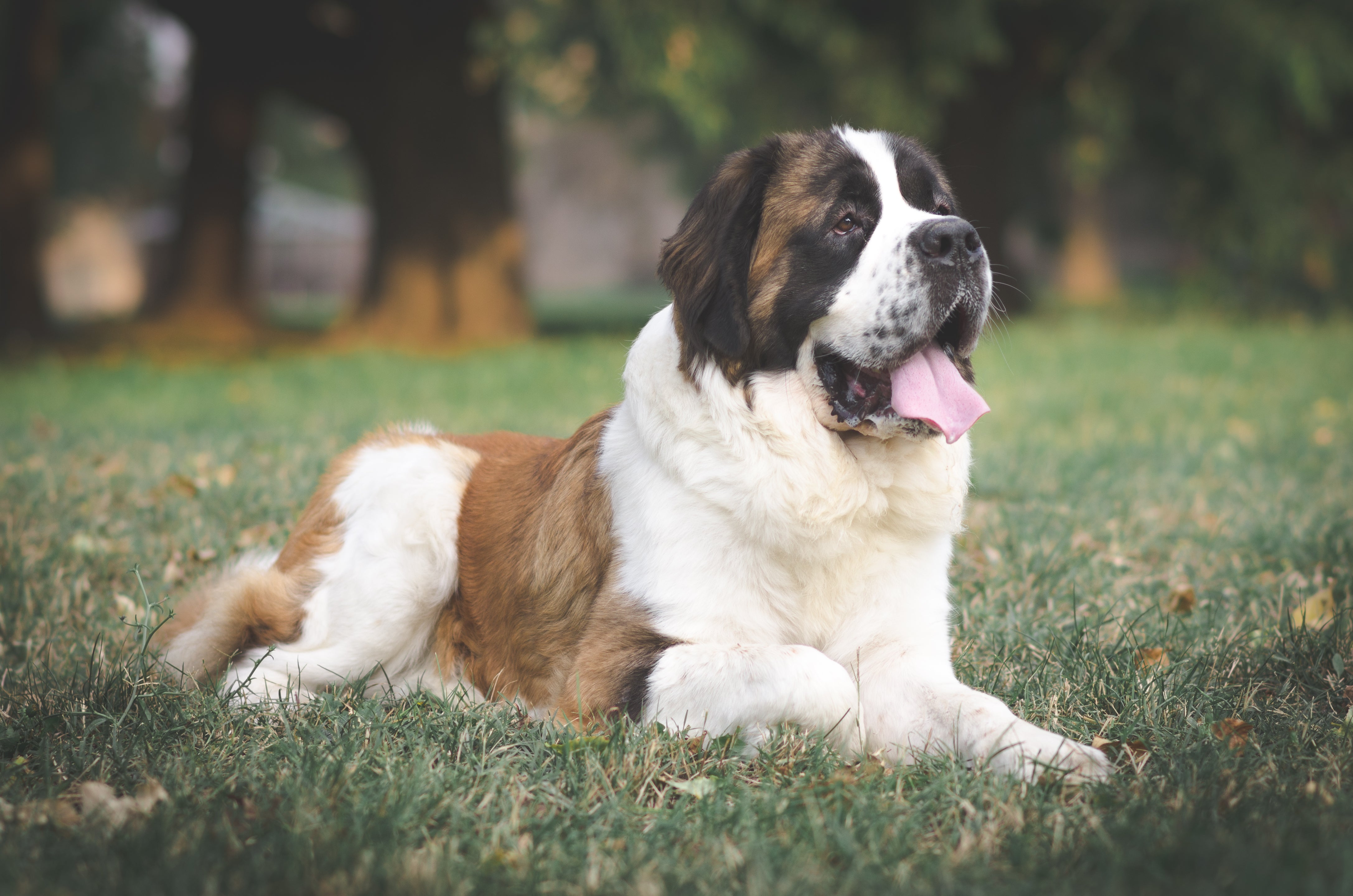Saint Bernard
Genial giants, the Saint Bernard is easily one of the most recognizable dog breeds in the world with their jowled heads, dark, endearing eyes, and thick orange and white coats that come in short and long variations. They are a muscular, powerful breed that is giant in size. The Saint Bernard breed’s intelligent, warm expression features a wrinkled brow, making them look like they are constantly deep in thought.
Breed characteristics carousel
Learn More
Need to Know
- Suitable for experienced owners
- Extra training required
- Potential health risks
- Enjoys active walks
- Can be left alone with training
- Giant dog
- Significant drool
- Requires frequent grooming
- Quiet dog but barks to alert
- Could have issues with unknown dogs, but get along well with dogs they are familiar with
- May need additional training to live with other pets
- May need additional supervision to live with children
- Needs a large yard, either in suburban or rural areas
- AKC Registered Breed

Personality
Saint Bernards have an impressively calm demeanor for a dog of such stature. They are affectionate, easygoing, and good-humored dogs who are happiest when with their human companions. It would be hard-pressed to find a dog more devoted to their family.
Saint Bernards are a relatively quiet breed, but when they bark you will hear it—especially if they are defending owners or property. They are a trustworthy and very loyal breed that will love to follow their owners around, snuggle, and jump up on your lap, unaware or uncaring of their size.
Saint Bernards were developed by Monks in the 18th century at a hospice center in the Swiss Alps. They were used to locate and rescue travelers who needed help. Legend has it that they saved over 2,000 people who were caught in harsh storms and avalanches in the area. Shortly after, they were bestowed the nickname of the “Good Samaritan Dog.” They came to the U.S. in the late 1800s.
The ideal owner for the Saint Bernard is someone who understands the restrictions and lifestyle that come with having a large dog. You will need a spacious home and yard, plus the budget to groom and feed a Saint Bernard. Owners should not mind drool either, as Saint Bernards often leave puddles of drool lying around. This dog is a breed that needs owners to adapt to its way of life, not the other way around.
Saint Bernards need less exercise than other dogs of the same size, but they still need adequate time to run and romp. These dogs are happiest when doing activities with their family, such as hiking or walking.
Saint Bernard dogs can have two different coat types: long-haired and short-haired. Both require the same amount of care including brushing to remove dirt, loose hair, and detangle. They shed heavily twice a year. While they are generally clean dogs, they do drool a lot.
Dogs of this size and strength need adequate training. Saint Bernards are not the most obedient dogs, but they must be trained to learn what not to do, such as jumping, knocking over children, stealing food from the dinner table, and more. Even though it can take a minute for them to lean into their training, Saint Bernards are tender-hearted and aim to please, so once they understand what is expected from them, they generally start responding positively to commands.
The Saint Bernard makes an excellent family dog, especially for households with older children and lots of indoor and outdoor space. They are devoted to their owners and make great companion dogs. Their size and power make them less than ideal choices for families with small children or elderly members.
The cost of a Saint Bernard from a breeder is significantly more than the cost of adopting one from a local shelter or rescue. The adoption fee usually covers additional items such as spaying or neutering, vaccines, and microchipping.

Learn more about feeding and caring for your Saint Bernard on Purina.
Did You Know?
- Monks attempted to cross the St. Bernard with the Newfoundland to create a thicker, warmer coat. However, they found the longer fur captured matted snow and ice and weighed them down.
- It can take up to three years for Saint Bernards to finish growing.
- In the movie Beethoven’s 2nd, production had to utilize over 100 Saint Bernard puppies for the main character because they grew so fast.
- The most successful Saint Bernard rescue dog was named Barry. In the 1800s, he rescued over 40 people from the Alps.

